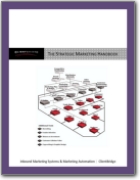- What sets you apart from other market offerings?
- What makes your product, service or business valuable to your customers?
- What space have you carved out in the marketplace?
- What mind share do you occupy?
To create a unique brand strategy that will bring your competitive positioning to life, start by profiling your market. A market profile is not unlike your own. Viewing your profile allows you to see all of the unique features of your face, a face that is different from every other. Each distinct facial feature sets you apart.
A market profile reveals the unique characteristics of your typical customer and customer groups. It paints a picture of whom you are selling to and what your typical customer looks like. A good one will allow you to separate your prospects from those who aren’t interested in your product. Your brand appeal should be focused solely on the people or businesses that fit your profile.
The Classics
Let’s look at the classical approach to creating a market profile. Think about each attribute of your market and quantify that information.
Industries (for B2B)
- That industries do you serve?
- Do you appeal to more than one type of industry/person?
- Are there opportunities in other industries?
- Is the general industry in a growth phase or is it in decline?
Geography
- Where do your customers reside?
- Are your target customers global, national or locally concentrated?
- Does your product cross cultural barriers?
Business-to-Business
- What is the size of your typical target business?
- What stage of development are they experiencing?
- What is their ownership structure: private, public, nonprofit, or governmental?
- What is the age, gender, income, marital status, or family status of your target customer?
- Do they have unique occupations, clubs or common interests?
For Both B2B and Consumer Markets
- How many potential customers or business prospects are there?
- What amount does your target customer spend in your category of business?
- What is their average income or annual business revenue?
- What are the individual demographics or business trends in your target area?
You’ve now learned many of the concrete details about your market profile. Now add the elements of the “touchy feely” buyer persona to the equation. This will add intelligence to your profile, and give you a better understanding of who you’re really selling to.
Consider:
- What problems do your customers face, whether business or personal?
- What are their personalities, pains and desires?
- Who actually makes/approves the buying decision? It may not be who you originally identified.
- What is a typical decision-making process?
- What unique sets of psychological processes do your buyers have in common?
- Are there other people who influence the buying decisions?
Most importantly, when you are making brand strategy decisions, make sure that they resonate with everyone in your market profile. If your profile is accurate and focused, you will lay the foundation for a strong brand that your market embraces.
To learn more about the Strategic Marketing Process, download our free Strategic Marketing eBook

